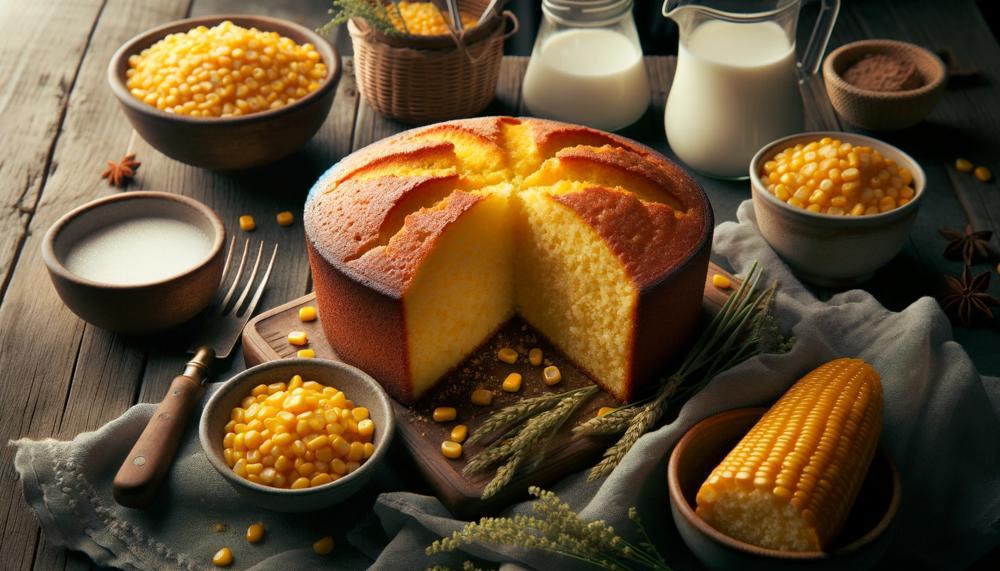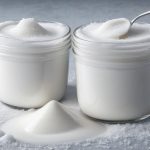Cornbread is a delicious staple in many households, but like any food, it can go bad if not stored properly or if it exceeds its shelf life. Knowing how to recognize the signs of spoilage can help ensure that you enjoy your cornbread while it’s still fresh and safe to eat.
If you’re wondering how to tell if your cornbread has gone bad, there are a few key indicators to look out for. Mold growth is a clear sign that your cornbread has spoiled and should not be consumed. Additionally, if the cornbread appears excessively moist or has a foul odor, it’s best to err on the side of caution and discard it.
To keep your cornbread fresh for as long as possible, proper storage is crucial. After it has cooled, wrap the cornbread tightly to prevent it from drying out. Plastic wrap, resealable freezer bags, or airtight containers can all be used for storage.
In this article, I will provide answers to common questions about storing and preserving cornbread, including whether it needs to be refrigerated, the best ways to store it, and how long it can safely be kept. By following these tips, you can extend the shelf life of your cornbread and enjoy it at its best.
Contents
Key Takeaways:
- Look for signs of spoilage, such as mold growth, excessive moisture, or a foul odor, to determine if cornbread has gone bad.
- Plain cornbread typically does not need to be refrigerated, but cornbread with added ingredients like veggies or cheese should be stored in the refrigerator.
- Properly wrap cornbread in plastic wrap, resealable freezer bags, or airtight containers to maintain its freshness.
- Freshly baked traditional cornbread can last for 3 to 5 days at room temperature and up to a week in the fridge.
- Reheat cornbread in the oven for the best taste, avoiding the microwave or leaving frozen cornbread on the countertop to thaw.
How Can You Tell If Cornbread Has Gone Bad?
Mold, a foul smell, or a stale flavor indicate that cornbread has gone bad. Additionally, you may taste a little portion; if it tastes moldy or harsh, it is no longer good.
When completely cool and coated in plastic wrap or aluminum foil, cornbread keeps well for up to three days at room temperature. You may keep it in your pantry on a shelf or in a bread box.
To extend the shelf life of cornbread, you may place it in an airtight plastic bag or wrap it in plastic wrap or aluminum foil. Additionally, cornbread dressing freezes well for up to four months.
Does Cornbread Need to Be Refrigerated?
When it comes to storing cornbread, refrigeration isn’t always necessary. Plain cornbread, without any added ingredients, can typically be kept at room temperature for a few days if properly wrapped and stored. However, if your cornbread contains perishable additions like vegetables or cheese, refrigeration becomes essential to prevent bacterial growth and maintain food safety.
Refrigerating cornbread with added ingredients helps to prolong its freshness and extend its shelf life. The lower temperature of the fridge slows down the growth of bacteria and mold, preserving the quality of the cornbread. It’s important to note that refrigeration might affect the texture of cornbread, making it slightly denser. But this slight change in texture won’t affect its taste or overall quality.
The shelf life of cornbread varies depending on the recipe and storage conditions. Let’s take a look at some common cornbread types and their recommended storage methods:
- Plain Cornbread: Can be kept at room temperature for 3 to 5 days if tightly wrapped. No refrigeration required.
- Cornbread with Veggies or Cheese: Should be refrigerated and consumed within 3 to 4 days.
Understanding the specific storage requirements for your cornbread ensures that you can enjoy it at its best for longer. Properly storing cornbread and following the recommended guidelines can help maintain its flavor, texture, and overall quality.
| Cornbread Type | Storage Method | Shelf Life |
|---|---|---|
| Plain Cornbread | Room temperature, tightly wrapped | 3 to 5 days |
| Cornbread with Veggies or Cheese | Refrigerate | 3 to 4 days |
How to Store Cornbread
After cooling, proper storage is key to maintaining the freshness of cornbread. By following these storage tips, you can ensure that your cornbread stays moist and delicious for longer.
Wrapping Options
To prevent cornbread from drying out, it should be wrapped tightly. Here are three common wrapping options:
- Plastic Wrap: Use plastic wrap to tightly cover the cornbread, ensuring it is completely sealed.
- Resealable Freezer Bags: Place the cornbread in a resealable freezer bag, removing as much air as possible before sealing.
- Airtight Containers: Store the cornbread in airtight containers, such as Tupperware or glass containers with lids.
Choose the wrapping option that works best for you, based on your preference and the availability of materials.
Refrigeration or Room Temperature?
Whether to refrigerate or store cornbread at room temperature depends on the type of cornbread and how long you need to store it.
In general, traditional cornbread without any added ingredients can be stored at room temperature for a few days if properly wrapped. However, if you live in a hot and humid climate, it can be beneficial to refrigerate it.
Cornbread with added ingredients like veggies or cheese should be refrigerated to prevent bacterial growth and maintain its freshness. This will extend its shelf life for up to a week.
Consider the specific type of cornbread you have and the duration it needs to be stored when deciding whether to refrigerate or store at room temperature.
Freezing for Longer Storage
If you need to store cornbread for a longer period, freezing is an effective option. Follow these steps:
- Allow the cornbread to cool completely.
- Cut the cornbread into individual portions.
- Wrap each portion tightly with plastic wrap or aluminum foil.
- Place the wrapped portions in a resealable freezer bag or airtight container.
- Label the containers with the date of freezing to keep track of storage time.
Remember to thaw frozen cornbread in the refrigerator overnight before enjoying it.
| Type of Cornbread | Storage Method | Shelf Life |
|---|---|---|
| Traditional Cornbread | Room Temperature | 3-5 days |
| Cornbread with Extras (e.g., Veggies, Cheese) | Refrigerator | 3-4 days |
| All Types – Frozen | Freezer | Up to 3 months |
Note: These are general guidelines. Always use your judgment and inspect the cornbread for signs of spoilage before consuming.
How to Freeze Cornbread
If you find yourself with more cornbread than you can consume, freezing is a great option to extend its shelf life. Follow these steps to freeze cornbread effectively:
- Portion the cornbread: Cut the cornbread into individual servings or desired portions. This will make it easier to thaw and avoid any wastage.
- Wrap in aluminum foil or freezer bags: Enclose each portion of cornbread tightly in aluminum foil or freezer bags. The wrapping will help prevent freezer burn and maintain the quality and texture of the cornbread.
- Use airtight containers (optional): For added protection, consider using airtight containers instead of foil or bags. This can help maintain the shape of the cornbread and prevent any moisture from seeping in. Label each container with the date of freezing for easy identification.
- Place in the freezer: Put the wrapped or containerized cornbread portions in the freezer. Ensure they are placed in a flat position for even freezing.
When it comes to thawing the frozen cornbread, the best method is to transfer it to the refrigerator and let it thaw overnight. This gradual thawing process helps retain the moisture and texture of the cornbread. Avoid thawing at room temperature to prevent bacterial growth.
In summary, freezing cornbread allows you to preserve its freshness and enjoy it at a later time. Proper portioning, wrapping, and storage in containers are key to maintaining the quality of the frozen cornbread.
| Materials Needed | Steps |
|---|---|
| Cornbread | 1. Portion the cornbread into servings or desired portions. |
| Aluminum foil or freezer bags | 2. Wrap each portion tightly in aluminum foil or freezer bags. |
| Airtight containers (optional) | 3. Alternatively, use airtight containers for extra protection. Label each container with the freezing date. |
| Freezer | 4. Place the wrapped or containerized cornbread portions in the freezer in a flat position. |
| Refrigerator | 5. Thaw the frozen cornbread in the refrigerator overnight for best results. |
How Long Does Cornbread Last?
Freshly baked traditional cornbread can last for 3 to 5 days at room temperature and up to a week in the fridge. Cornbread with added ingredients like veggies or cheese can last for 3 to 4 days in the fridge. Freezing can extend the storage period of cornbread.
Cornbread, like any other baked goods, has a limited shelf life. Depending on the storage conditions and the ingredients used, the freshness of cornbread can vary.
Traditional cornbread made with just the basic ingredients – cornmeal, flour, buttermilk, eggs, and a leavening agent – can stay fresh for a few days at room temperature. However, to maximize its shelf life, it is recommended to store it in the fridge or freezer.
Cornbread that has been prepared with additional ingredients like vegetables or cheese has a slightly shorter shelf life. These added ingredients can increase the risk of spoilage, so it is important to refrigerate such cornbread promptly.
Below is a summary of the typical shelf life of different types of cornbread:
| Cornbread Type | Storage | Shelf Life |
|---|---|---|
| Traditional Cornbread | Room Temperature | 3-5 days |
| Cornbread with Extras (e.g. veggies, cheese) | Refrigerator | 3-4 days |
| All Types of Cornbread | Freezer | Up to a few months |
It is important to note that these are general guidelines, and the actual shelf life may vary depending on various factors such as the freshness of the ingredients, storage conditions, and how the cornbread was prepared. Always rely on your senses and check for any signs of spoilage before consuming cornbread that has been stored for an extended period of time.
How to Tell If Cornbread Is Bad
When it comes to cornbread, it’s essential to know how to identify spoilage signs before consuming it. Here are some key indicators that your cornbread may have gone bad:
- Mold: Check for the presence of any fuzzy or discolored patches on the surface of the cornbread. Mold growth is a clear sign of spoilage and should not be consumed.
- Sour Smell: Give the cornbread a sniff. If you detect a strong sour or rancid odor, it’s likely that the bread has gone bad and should be discarded.
- Texture: Take a close look at the texture of the cornbread. If it has become excessively moist and soggy, it’s a sign that it has spoiled.
- Stale: While not necessarily a safety concern, stale cornbread may taste unpleasant and have a dry, crumbly texture. Stale cornbread is still safe to eat if there are no other signs of spoilage.
It is important to note that these spoilage signs can vary depending on the specific recipe and storage conditions of the cornbread. Always trust your senses when determining the freshness and safety of your cornbread.
| Signs of Bad Cornbread | Indicators |
|---|---|
| Mold | Fuzzy or discolored patches on the surface |
| Sour Smell | Strong sour or rancid odor |
| Texture | Excessively moist and soggy |
| Stale | Dry, crumbly texture |

How to Properly Reheat Cornbread
Reheating cornbread is essential to bring back its delicious flavor and texture. To ensure the best results, follow these steps:
- Preheat your oven to 350°F (175°C) to ensure even heating.
- Place the cornbread slices on a baking tray lined with parchment paper or a silicone baking mat to prevent sticking.
- Cover the cornbread slices with aluminum foil to prevent them from drying out or burning during the reheating process.
- Bake the cornbread in the preheated oven for approximately 10 minutes or until it is heated through.
- Remove the baking tray from the oven and carefully take off the aluminum foil.
- Allow the cornbread to cool for a few minutes before serving.
Tip: Avoid using the microwave or leaving frozen cornbread on the countertop to thaw. Microwave reheating can result in uneven heating, making the cornbread rubbery. Thawing frozen cornbread at room temperature can lead to moisture loss and a stale texture.
By following these reheating instructions, you’ll be able to enjoy warm and flavorful cornbread just like it was freshly baked!
| Reheating Method | Advantages | Disadvantages |
|---|---|---|
| Oven | – Ensures even heating | – Longer reheating time |
| Microwave | – Quick reheating | – Can result in uneven heating and rubbery texture |
| Countertop Thawing | – Convenient | – Can lead to moisture loss and stale texture |
Also Read: Does Campbell’S Soup Go Bad?
Conclusion
In conclusion, proper storage and handling are essential for maintaining the freshness and preventing spoilage of cornbread. Storing cornbread in airtight containers or wrapping it tightly can help preserve its quality and extend its shelf life. Freezing is also an effective method for longer storage periods.
When storing cornbread, it is important to check for any signs of spoilage, such as mold growth, a foul odor, or a change in texture. These can indicate that the cornbread has gone bad and should not be consumed.
By following these storage tips and taking the necessary precautions, you can enjoy delicious and fresh cornbread for an extended period, ensuring that none of it goes to waste. Remember to prioritize proper storage methods to maintain the flavor and quality of your cornbread.
Source Links
- https://www.doesitgobad.com/does-cornbread-go-bad/
- https://thekitchenjournal.com/does-cornbread-go-bad-how-should-you-store-it/
- https://www.bakingkneads.com/does-cornbread-mix-go-bad/




